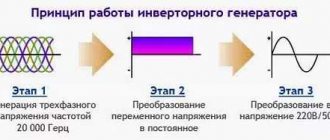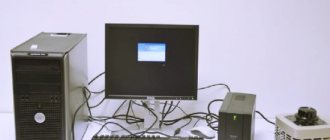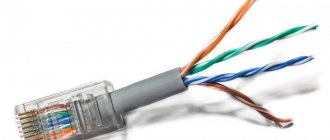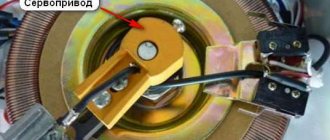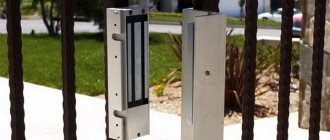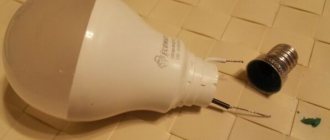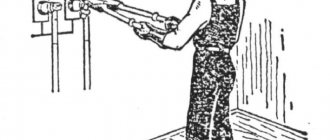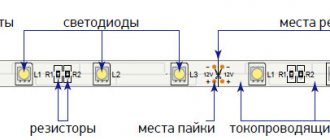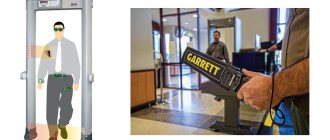A robot vacuum cleaner has long ceased to be considered an innovation and for many has become a familiar attribute of home appliances.
It’s convenient when someone cleans your apartment of trash without any reminders or scandals instead of you.
Modern design projects sometimes even mention the mandatory requirement for accessibility of cleaning using robot vacuum cleaners!
Just don’t forget that, first of all, this is a device for MAINTAINING cleanliness, and its presence in the apartment in no way eliminates the need for general cleaning.
Of course, your so-called accumulative garbage will disappear, but you still won’t be able to forget about the mop.
In this article we will look at how good models should differ from not so good ones, and what parameters should be emphasized first when purchasing.
Manufacturer
Which manufacturer should you choose?
Mistake #1
The manufacturer does not matter; the more expensive the device, the more effective it is.
Not really. There is a universal rule here that applies to other areas of our lives.
Really good vacuum cleaners come from SPECIALIZED robotics manufacturers.
Because a robot vacuum cleaner must first of all be a ROBOT. A striking example is the products of the company IRobot.
Here are typical reviews from real users.
Other well-known companies, which are famous primarily for their refrigerators, hobs or ovens, do not have the same level of resource base, experience and, most importantly, specialists in this particular field.
Yes, they also produce worthy specimens, but this does not make them the best. You are simply overpaying for the brand.
Does it make sense to pay more?
Top models of vacuum cleaners can do much more than their younger brothers. And we are not talking about some useless features. For example, more expensive models disentangle themselves from wires, navigate in space and analyze errors. They also have additional sensors to help prevent falls if there are stairs in the room. The flagships from ECOVACS, for example DEEBOT OZMO T8 AIVI, can do all this. It not only moves deftly around the apartment, but also cleans stubborn dirt with the help of a built-in vibrating tank. And DEEBOT T9 is equipped with an air freshener to remove unpleasant odors. In addition, all premium models can be controlled via an app - you can start cleaning in advance when you return from a trip, or simply drive through your apartment and use a video camera to check if everything is in order.
Power
How powerful should a robot vacuum cleaner be? In the characteristics you can find two values.
Mistake #2
Do not confuse power consumption with suction power.
Power consumption tells you how much electricity the device “eats” after each charge and how many kilowatts the electric meter will generate at the end of the month.
Mistake #3
There is no direct relationship here - the more powerful the device, the better the cleaning.
But suction power (or volumetric air flow rate) is a completely different matter. It is she who is responsible for how well the vacuum cleaner will draw in air and all the dust along with it.
The optimal value of suction power is 35-40 “aero” watts. 20-25W is still not enough.
In order to easily cope with wool and hair in rugs and carpets, more than 40 W will be required.
In some specifications, this parameter is indicated in Pascals. They show the inlet pressure drop.
- up to 1000 Pa – weak vacuum cleaner
He will no longer be able to get sugar or salt from the carpet. It won't even be able to clean the deep seams between the tiles and the laminate.
- 1500-1600 Pa is more or less an option
- 2000-2500 Pa – a good robot cleaner
Traditional giant vacuum cleaners have suction power from 200 to 500W. It would seem, what is a baby with 40W on board capable of?
And here, for some reason, everyone forgets about the height of the garbage lift. The fact is that a small “pancake” does not need to drive dust through a long corrugated tube.
Therefore, 40W will be more than enough for him to lift the debris a couple of centimeters from the floor and pull it inside.
Other device functions
All robot vacuum cleaners come with a base on which they are recharged. When the battery charge approaches a certain minimum, the vacuum cleaner independently rushes to its base, finds it using special sensors and connects to the charger. Once charging is complete, it will continue working on its own.
Depending on the “advancement” of the model, charging time can take from 40 minutes to 8 hours. Pollution sensors - most models are equipped with them. These devices allow you to identify the most contaminated areas, while cleaning them takes longer and is more thorough.
Surface recognition sensors allow the vacuum cleaner to recognize the type of surface and use the appropriate mode to clean it.
Cheap models of vacuum cleaners often get tangled in wires lying on the floor, so they have to be lifted before cleaning. More expensive models use a system to prevent the robot from becoming entangled in wires or any small objects. When it is triggered, the operation of the brushes and vacuum cleaner is turned off, and the robot itself tries to leave this place, after which work resumes.
The function of programming cleaning time is available in vacuum cleaners of medium and high price categories. The panel has buttons for setting up a cleaning schedule. This allows you to configure not only the time, but also the day of cleaning. You can, for example, set up a vacuum cleaner to clean at a time when it does not disturb anyone.
The air ionization function is necessary for those families with allergies. It involves the presence of an ultraviolet lamp in the device, which disinfects the surface being cleaned, thereby reducing the risk of allergic reactions. There are models that can accompany cleaning with music. Of course, this is overkill, but someone might like it.
Each robot vacuum cleaner is equipped with a bag or container for collecting dust. Usually it is emptied manually, but in expensive models this function is automated. Cleaning the container occurs simultaneously with recharging the device.
Some models are equipped with attachments for collecting pet hair. But you shouldn’t hope for a miracle: they won’t be able to clean a shaggy carpet filled with wool.
Shape - round or square?
All traditional models were originally round in shape.
Mistake #4
But many are sure that a round robot copes with its duties much worse than the newfangled D-shaped (square) vacuum cleaners.
Yes, indeed, the square one cleans the corners a little more efficiently. After it, the debris remains within a radius of no more than 1 cm from the inner corner. The round one is a little more than 2cm.
Here are the test results of three round robots and one square robot, carried out under ideal conditions (garbage scattered around the corners and edges in a closed rectangle).
D-robot won with an enviable advantage.
However, look around your rooms and wonder if the robot can reach those very corners? Most often they are filled with some kind of furniture, household items, battery pipes, etc.
Therefore, in 90% of cases, no robot will simply get there, which means there is no point in focusing on the square shape. In addition, round has a number of advantages:
- it is more passable
After driving into a corner, he does not need to back up to turn around.
- it hits objects less when turning
The effectiveness of cleaning in corners is solved in simpler ways:
- enlarged side brushes
- moving them to the front of the body
- more suction power
Brushes
There are two types of brushes that the device uses to capture debris.
- lateral
- turbo brushes or suction hole
How many side brushes should a good robot vacuum cleaner have?
Mistake #5
The bigger, the better.
Not at all. Leading manufacturers usually limit themselves to just one! First of all, it is needed when cleaning along the baseboards and corners of the room.
Those who put two at a time explain this by the need to cover more of the area being cleaned in one pass. In fact, with good navigation this does not play a big role.
When moving with a snake, the surface is cleaned equally with both one and two brushes. The most important thing to pay attention to is the DESIGN of the side brushes.
Mistake #6
It's bad when the bristles occupy almost the entire length of the brush.
The fact is that such brushes turn out to be less elastic, quickly deform and begin to collect debris in the corners worse. The pile should occupy a maximum of half the length.
The best option for wear resistance is silicone five-ray ones.
Mistake #7
However, on smooth floors, they scatter debris more to the sides rather than sweeping it under themselves.
On carpets they are definitely inferior to pile.
How much will such a device cost me?
Prices for robotic vacuum cleaners start at 10,000 and reach approximately 60,000 rubles for top models. It all depends on the set of functions, the ability to remember routes, avoid obstacles and perform wet cleaning efficiently. You definitely shouldn’t buy a vacuum cleaner that costs less than 10,000 rubles - most likely, it has a very bad battery installed and there will be no side or central brushes. In addition, cheap models have very low suction power, so they are more likely to be useless. It’s better to immediately purchase a full-fledged device that vacuums perfectly and won’t break after a few months.
In the middle segment, you can pay attention to the reliable and powerful DEEBOT N8
Turbo brush or rollers?
At the bottom in the middle of the robot body there is either an air suction hole or a turbo brush. She is the main cleaner.
The side brushes simply scatter and direct particles of debris in a given direction. All the main work is done by the central air intake or a roller with bristles.
The air intake is only suitable for working on hard floors - tiles, linoleum, parquet.
The roller is good at collecting garbage, pet hair and long hair on any surface. Even from your head if you accidentally fell asleep on the floor
